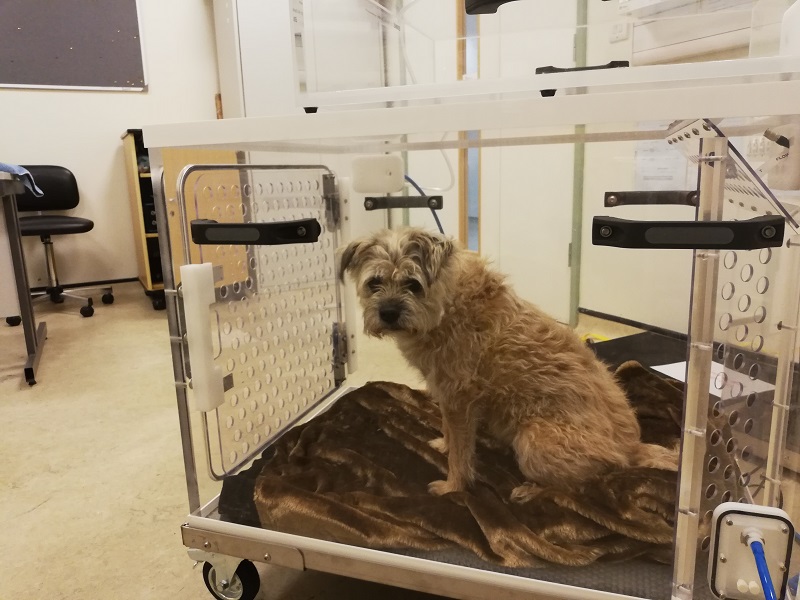Transforming treatments with advanced respiratory technology
Clinical Connections – Spring 2019
Lynda Rutherford, Lecturer in Small Animal Surgery
As veterinary science breakthroughs accelerate, so the need to harness technology increases. RVC Small Animal Referrals teams now have access to two new pieces of equipment that will help referral and emergency cases as well as support important research that progresses veterinary treatment.
High-flow oxygen therapy
Patients with significant breathing problems, which could involve disease of the lungs or airways, require oxygen therapy to improve their condition whilst diseases such as pneumonia are treated. There are a few ways to provide oxygen therapy and depending on the severity, only a few methods can be effective. Traditionally, in the most severely affected patients, this requires them to be under a general anaesthetic and a mechanical ventilator is used to perform all of the breathing for the patient.
High-flow oxygen therapy can provide enough oxygen without the need of a general anaesthetic, thus significantly reducing the risk and stress factors of treatment. By using a special nasal cannula, the oxygen can be heated, humidified and delivered at much high rates than conventional oxygen therapy.
This then provides adequate oxygenation to prevent them needing a mechanical ventilation. This huge advancement in the care for patients with severe respiratory disease is less costly and associated with fewer complications.
In addition to daily case management, the RVC team is establishing a clinical research programme to further develop, refine and find new applications for oxygen therapy. Specific areas which will benefit from this initiative include the Veterinary Trauma Centre, the Cardiopulmonary Bypass Programme and the Brachycephalic Clinic.

Whole-body barometric plethysmography (WBBP)
The RVC Small Animal Hospital now has WBBP equipment – this is a giant leap forward for patient management. A plethysmograph is essentially a Perspex box, albeit a very complex one. It allows us to accurately and objectively assess the severity of respiratory disease.
The WBBP receives constant ventilation and is attached to monitoring equipment that detects pressure changes within the chamber. When a patient is settled in the sealed box, pressure changes within the box correspond to the patient’s breathing. A wide variety of respiratory parameters can be obtained from the resulting pressure-change trace.
This will be extremely useful for many patients, including the increasingly popular brachycephalic dog breeds such as English and French bulldogs and pugs. We use the WBBP to assess the severity of conditions such as brachycephalic obstructive airway syndrome (BOAS), cats with asthma and patients with suspected pneumonia. WBBP allows an objective measurement of respiratory function and will help to assess effectiveness of treatment.
Animal Care Trust funding allowed three different sizes of WBBP chamber to be purchased, enabling the RVC to use this new equipment on a wide range of patient sizes. We are the only veterinary centre in the UK to currently offer this technique in cats.
Previously, the severity of small animal respiratory disease has been challenging to assess. There has been a reliance upon subjective clinical signs and monitoring techniques that are invasive or require chemical restraint. Performing WBBP allows RVC clinicians to quantitatively assess patients’ respiratory function in a non-invasive manner, both at the time of diagnosis and following treatment for respiratory disease.
We are looking forward to using the equipment in various patient groups at RVC Small Animal Referrals, including dogs examined through our Brachycephalic Clinic, internal medicine patients with airway disease, and acromegalic cats examined through the our Hypophysectomy Clinic.
In addition, WBBP will support research at the RVC, including a planned collaboration with the RVC’s renowned muscular dystrophy research group.
